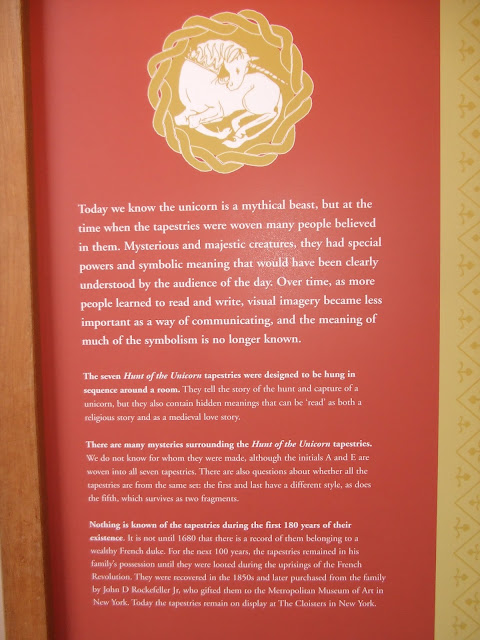Yesterday was a magical day in many ways. My mum`s here for the Spring school break and after anxiously watching the weather forecast (and the persistent snowfall) for days, it finally stopped on the very day we`d planned to go on a day trip and so we could set out in brilliant sunshine to Stirling.
I`ve visited this beautiful place in the heart of Scotland once, back in 2000, well before I got married, had a baby or even toyed with the idea of ever attempting any form of needlework. So little did I know that this time, when I went back with my family, one of the main attractions of Stirling Castle would be The Tapestry Exhibition.
In 2002, a dedicated team of master weavers embarked on a 13-year-long labour of love, recreating 7 tapestries depicting The Hunt of the Unicorn (the original gobelins are in the Metropolitan Museum of Art in New York). According to the guide book, "the Stirling Tapestries project has been the biggest weaving task undertaken in Britain for a century, conducted in partnership with the Quinque Foundation of the United States. With contributions by 18 weavers from all over the world, and more than 16,000 hours spent weaving a single tapestry, this has been a labour worthy of medieval master-weavers." I could not agree more and, to honour the 18 amazing people who gave all this time and talent to achieve their goal, here are their names and the length of time they each dedicated to these tapestries:
And here are a few examples of what they`d been working on - everybody should see these tapestries "in the flesh" because photos don`t do them justice but for the now, they`ll have to suffice:
Like the originals, the new tapestries were woven on their sides too; as the guide book explains, "there is a technical reason for this. The lines of a tapestry look softer when it is woven sideways to the warps; whereas a stepped effect is produced when a line is woven vertically".
In the modern tapestries, silk was replaced by the stronger mercerised cotton, and instead of gilt, gold thread spun around a cotton core was used. However, the main weft thread was, as in the originals, wool: after careful colour matching, large batches were dyed (with chemical dyes, as opposed to the natural dyes that would have been used in the 1500s). The teams also decided to break with the tradition of making the gobelins from the back: "weavers prefer to see what they are working on, and weaving this way is much more interesting for visitors to watch".
In the specially designed studio constructed at Stirling Castle, over 5 million people saw the birth of 4 of these tapestries (the other 3 were woven at The West Dean Tapestry Studio in West Sussex). And now, after the work has finished, the studio houses an exhibition telling the story of this mammoth project and visitors can also watch short films, see the loom and touch the cones of colourful wool. There is also an extensive introduction to the history and symbolism of the Unicorn Tapestries - something I didn`t have the time to read with a 12-year-old itching to see the armoury and the cannons of the castle... so here`s tonight`s reading material - I hope you`ll enjoy zooming in too! 😊












No comments:
Post a Comment